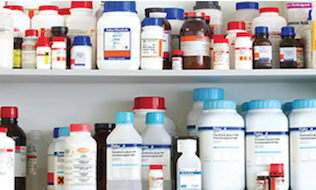
Plan sponsors are increasingly adopting plan design tools to manage their drug plan costs, according to Telus Health’s annual drug trends report.
It found private plan drug costs have grown 0.3 per cent per year on average for the past 10 years, made up of an average 2.1 per cent annual decrease in the cost of traditional drugs and an average 10.8 per cent yearly increase in the cost of specialty drugs.
“Given the rich pipeline of specialty drugs that far outweighs the traditional drugs we’re seeing, we can expect to see that trend line starting to creep up,” says Laura Mensch, vice-president of health benefits management at Telus Health.
Read: 2019 Drug Plan Trends Report: What’s next for drug plans?
While costs are increasing overall, the eligible monthly drug costs in private plans actually declined 2.6 per cent in 2018, due to the outsized impact of Ontario’s short-lived OHIP+ program, which covered medications previously covered by private plans for children and adults 24 and younger.
Even after removing plan members under the age of 25 from the data, the report found the growth rate of private plans’ eligible monthly drug costs stayed flat at zero per cent. The cost reduction for nearly 70 common generic drugs, negotiated by the pan-Canadian Pharmaceutical Alliance in April 2018, played a role in keeping costs stable, noted the report.
With OHIP+ amended to cover only those under age 25 who don’t have access to a private plan, employers will likely see their costs rise again, the report said. As well, specialty drugs account for an increasing percentage of eligible costs, at 29 per cent in 2018 up from 27 per cent in 2017 and just 12 per cent in 2009. Only 1.1 per cent of claimants currently use specialty drugs.
Amid these cost pressures, plan sponsors are increasingly interested in implementing drug plan controls. Among the options, 61 per cent of insured Canadians are in drug plans with mandatory generic substitution, up from 55 per cent in 2017 and 44 per cent in 2014.
Read: Beware unintended consequences of OHIP+ rollback: CLHIA
An additional 23 per cent of insured Canadians are in plans with a regular generic substitution policy in 2018. A regular policy allows for claimants or doctors to refuse the substitution, allowing the plan to still cover the cost of the brand-name drug. Combining the two policies, 84 per cent of those in drug plans are in one that encourages generic substitution, up from 75 per cent in 2014.
“The utilization of generic drugs shows it has a great impact on managing the [cost] trend line,” says Mensch. “The carriers have done a stellar job putting in mandatory generic substitutions. We’re seeing year-over-year generic substitutions going up.”
The report did note a gap between plan sponsors and plan members, with more (94 per cent) plan sponsors saying they have mandatory or regular substitution, compared with 84 per cent of plan members. “This indicates that a handful of employers with very large workforces have not adopted generic substitution or have opted out,” the report said, noting that union bargaining could be a factor in those cases.
Read: CUSMA’s data protection proposals for biologics could raise costs for private plans: PBO
Further, 66 per cent of plan members and 76 per cent of plan sponsors said they had co-insurance policies in 2018. For plan members, this number was down slightly from 69 per cent in 2017. Nearly two-thirds (63 per cent) of plan members with co-insurance said they pay 20 per cent of the drug’s cost, followed by 21 per cent who pay 10 per cent. Eleven per cent of members said they pay 25 per cent or more.
Mensch says co-insurance policies can be a particularly effective tool in helping plan members understand what their employer provides for them. “Without a co-payment in place, there’s really no lever to educate or communicate to plan members the value of the prescription drugs being funded by the employer.”
In the report, Telus recommended that plan sponsors considering co-insurance implement an out-of-pocket maximum “to help ensure that plan members’ total contributions remain reasonable over time.”
Another way to effectively curb drug costs is managed formularies, says Mensch. Those often involve two or three tiers of drugs, with the first tier reimbursed at a higher percentage and each subsequent tier reimbursed at a lesser amount.
Read: Growing use of specialty drugs putting pressure on plan sponsors: report
However, the option has seen slower growth than other plan design tools. Looking only at Ontario data, the report found the number of members in plans with managed formularies increased to 27 per cent in 2018, from 24 per cent in 2013. An additional six per cent of plan members said they have a plan with a provincial-mimic formulary, up from four per cent in 2013.
Mensch believes private plans will increasingly embrace managed formularies in the coming years. “I think you’ll see [them] be adopted in order to make room to cover the high cost of what we call specialty drugs. If plan sponsors, as the new high-cost and specialty [drugs] come in at a faster rate, haven’t looked at a lever like a managed formulary, now would be the time to start looking.”
The report also found 36 per cent of plan members are in plans that cap the reimbursement for pharmacists’ dispensing fees, the same as 2014. It also noted fewer plan sponsors (12 per cent) were likely to have this option.
Among plan members, 15 per cent are in drug plans with annual maximums, compared to 12 per cent in 2014. The most common maximum range was from $2,500 to $5,000 per year (32 per cent), followed by a maximum of up to $2,500 (22 per cent).
Read: What are the implications of pharmacare reform for private drug plans?
